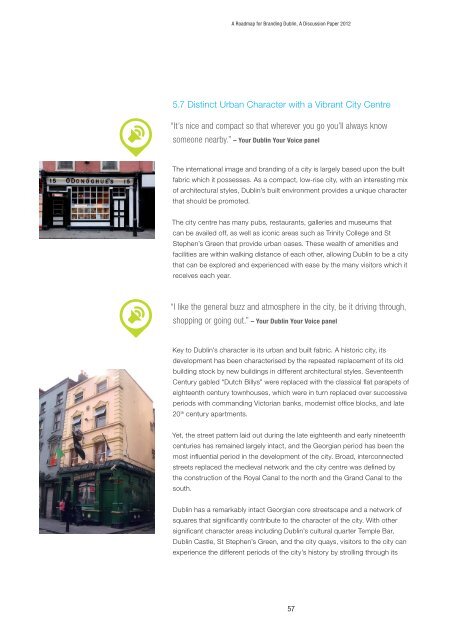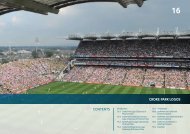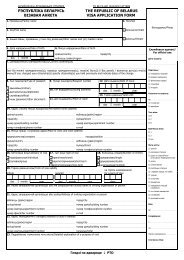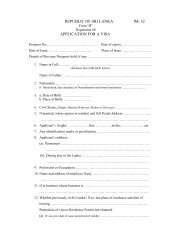CDA – A Roadmap for Branding Dublin 2012 – A Discussion Paper
CDA – A Roadmap for Branding Dublin 2012 – A Discussion Paper
CDA – A Roadmap for Branding Dublin 2012 – A Discussion Paper
You also want an ePaper? Increase the reach of your titles
YUMPU automatically turns print PDFs into web optimized ePapers that Google loves.
A <strong>Roadmap</strong> <strong>for</strong> <strong>Branding</strong> <strong>Dublin</strong>, A <strong>Discussion</strong> <strong>Paper</strong> <strong>2012</strong>5.7 Distinct Urban Character with a Vibrant City Centre“It’s nice and compact so that wherever you go you’ll always knowsomeone nearby.” <strong>–</strong> Your <strong>Dublin</strong> Your Voice panelThe international image and branding of a city is largely based upon the builtfabric which it possesses. As a compact, low-rise city, with an interesting mixof architectural styles, <strong>Dublin</strong>’s built environment provides a unique characterthat should be promoted.The city centre has many pubs, restaurants, galleries and museums thatcan be availed off, as well as iconic areas such as Trinity College and StStephen’s Green that provide urban oases. These wealth of amenities andfacilities are within walking distance of each other, allowing <strong>Dublin</strong> to be a citythat can be explored and experienced with ease by the many visitors which itreceives each year.“I like the general buzz and atmosphere in the city, be it driving through,shopping or going out.” <strong>–</strong> Your <strong>Dublin</strong> Your Voice panelKey to <strong>Dublin</strong>’s character is its urban and built fabric. A historic city, itsdevelopment has been characterised by the repeated replacement of its oldbuilding stock by new buildings in different architectural styles. SeventeenthCentury gabled “Dutch Billys” were replaced with the classical fl at parapets ofeighteenth century townhouses, which were in turn replaced over successiveperiods with commanding Victorian banks, modernist offi ce blocks, and late20 th century apartments.Yet, the street pattern laid out during the late eighteenth and early nineteenthcenturies has remained largely intact, and the Georgian period has been themost infl uential period in the development of the city. Broad, interconnectedstreets replaced the medieval network and the city centre was defi ned bythe construction of the Royal Canal to the north and the Grand Canal to thesouth.<strong>Dublin</strong> has a remarkably intact Georgian core streetscape and a network ofsquares that signifi cantly contribute to the character of the city. With othersignifi cant character areas including <strong>Dublin</strong>’s cultural quarter Temple Bar,<strong>Dublin</strong> Castle, St Stephen’s Green, and the city quays, visitors to the city canexperience the different periods of the city’s history by strolling through its57












